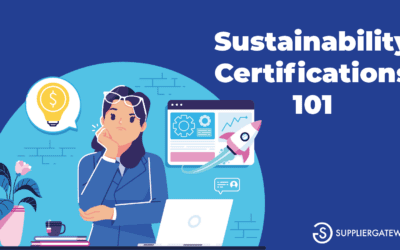Buyers find that identifying the right supplier may be difficult, and a sizable proportion of procurement teams consider this the most challenging component of their job. Choosing the correct supplier ensures that the products and services are supplied on time, at a suitable price, and according to their standards. Long story short—your client’s happiness and your company’s image might be damaged if you don’t meet their expectations as a supplier. But first – how do you even get there from here? How do companies choose suppliers and what impacts their decision?
How To Attract New Buyers
This article will walk you through how companies find suppliers and the seven most important actions your business can take to find buyers looking for your goods or services.
1. Price
Price is one of the critical factors buyers consider from a supplier. However, buyers don’t merely pick a supplier based on their price alone, especially if the purchase is non-commodity items. When it comes to general costs, low-quality products and services may not be the best choice in all cases. Sharpen your pencil – but also be cognizant that you need to earn a sufficient profit at the specified price for your company to remain in business – smart buyers know that too, and it impacts how companies choose suppliers.
2. Understand Your Brand
In the digital world, it’s becoming easier to conduct due diligence online and discover information via searches and by reviewing the websites or blogs of the potential suppliers.
Your most valuable asset is your website – know that buyers will head straight there. Depending on what the service or product is, buyers may do more due diligence in the form of risk checks, business reports, even compliance sanctions checks. You should definitely do some exploration about how you look to others – because buyers will be doing the same when they need to help decide about whether to engage you.
Keeping up with your brand and how it’s perceived should be a priority for your company, and you can find out more about brand management in this post.
3. Put Your Best Foot Forward
In the digital age, we all have to find a substitute for walking through the store and picking up the products on display. Buyers are people too – and a little tangible evidence like images, video clips, or detailed information of the facility, products, or services offered can go a long way to help you get into the “in” column, especially when you understand that there is competition to worry about.
4. Be an Easy Choice
Your company needs to represent a safe, best value choice for your prospective customer. Whatever you can present that signals your solid reputation (like reviews), your track record (like references), your stability (like certifications), will indicate that you can be an easy choice for the buyer who is looking at you vs. another company. If you have a unique product or service but are new to the market, reduce the perceived risk and think about warranties or even free trials.
This can be a risk – so you need to be sure your product or service is worth it – but without a long history, most buyers will be looking for a way to avoid making a risky choice with no backup.
5. Nothing Beats a Good Reputation
One of the ways your prospective customer will make a final judgment is to seek recommendations and reassurance from your previous customers. If you are on one of the leading marketplaces, such as Amazon, buyers will check the reviews directly from your sales page. If you are listed in business sites like SupplierGateway – your clients may leave reviews and ratings in your profile. Try to remember to check in with your customers and make sure they are as happy as you think they are. Your next sale may depend on it.
6. Be Ready to Go Big!
If you’re good at what you do – and we are sure you are – you should start to think about how you plan to manage your growth and success. This blog is not long enough for us to cover all of that – there are whole books, courses and industries dedicated to managing growth. But the most important thing is to remember that if it’s part of what you wish for, then growth has to be managed. If you discover that your customers are demanding massive shipments of the goods over time, they may soon exceed your incapacity.
There are some customer situations that are very unforgiving about late or missed deliveries. Just to be on the safe side – assume every customer situation is like that. Talk to your key customers and work closely with them – they are vested in your interest too – just not as an emergency.
7. Get to Know the People Who Buy Your Goods and Services
Until now, while it has been commonplace for customers to visit you and tour your factory, the circumstances of today’s global commerce footprint coupled with the impact of the pandemic have made that difficult.
The good news is, technology has made it possible to reduce some of the logistical challenges and costs while preserving the significant due diligence your customers need. Use this to your advantage – virtual meetings, media, and digital tools are a force multiplier for you and you make more meaningful connections and lasting impressions at a lower cost and in less time.












